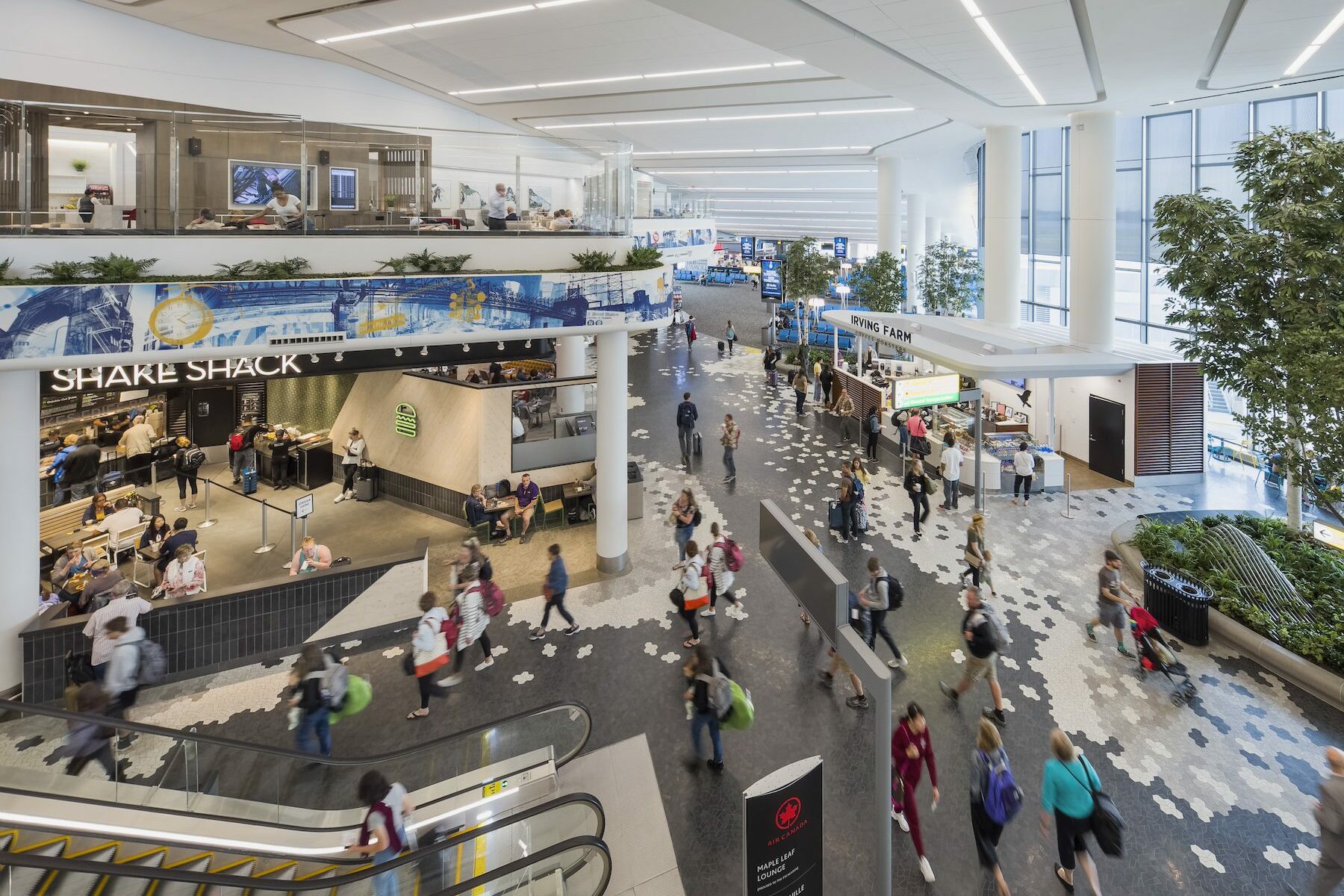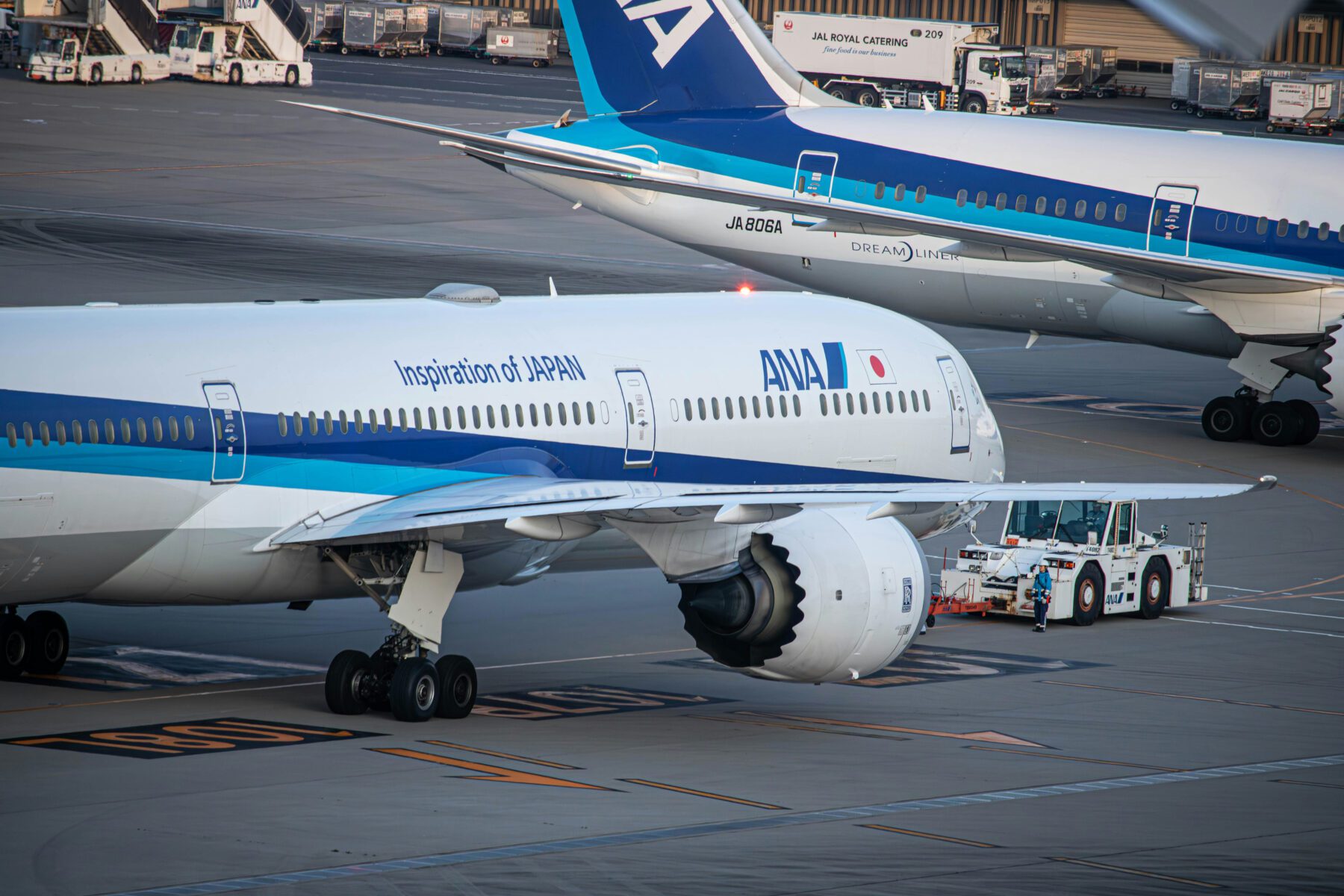The Passenger Experience: Balancing Technology and Human Touch in Modern Airports

As air travel has rebounded following the global pandemic, expectations from passengers for what they want from airports have changed, bringing the passenger experience and journey to the forefront.
Creating a seamless, simplified, and enjoyable experience has always been a priority for Vantage – an expertise we’ve honed at more than 30 airport locations around the world. And at the center of everything: the passenger. Every design choice, food and beverage partnership, and new technology implemented is guided by a simple question: Does this make the passenger experience better? While every airport is different, our commitment to creating the best passenger journey in the industry is constant.
Technology is a great facilitator here, tying together different aspects of the passenger journey for a unified experience and enabling digitalization efforts that bring convenience and comfort. But airport and terminal managers need to remember that technology is a tool. Passengers still want a human touch to the services they receive. And finding that balance is key to an intuitive, stress-free passenger journey.
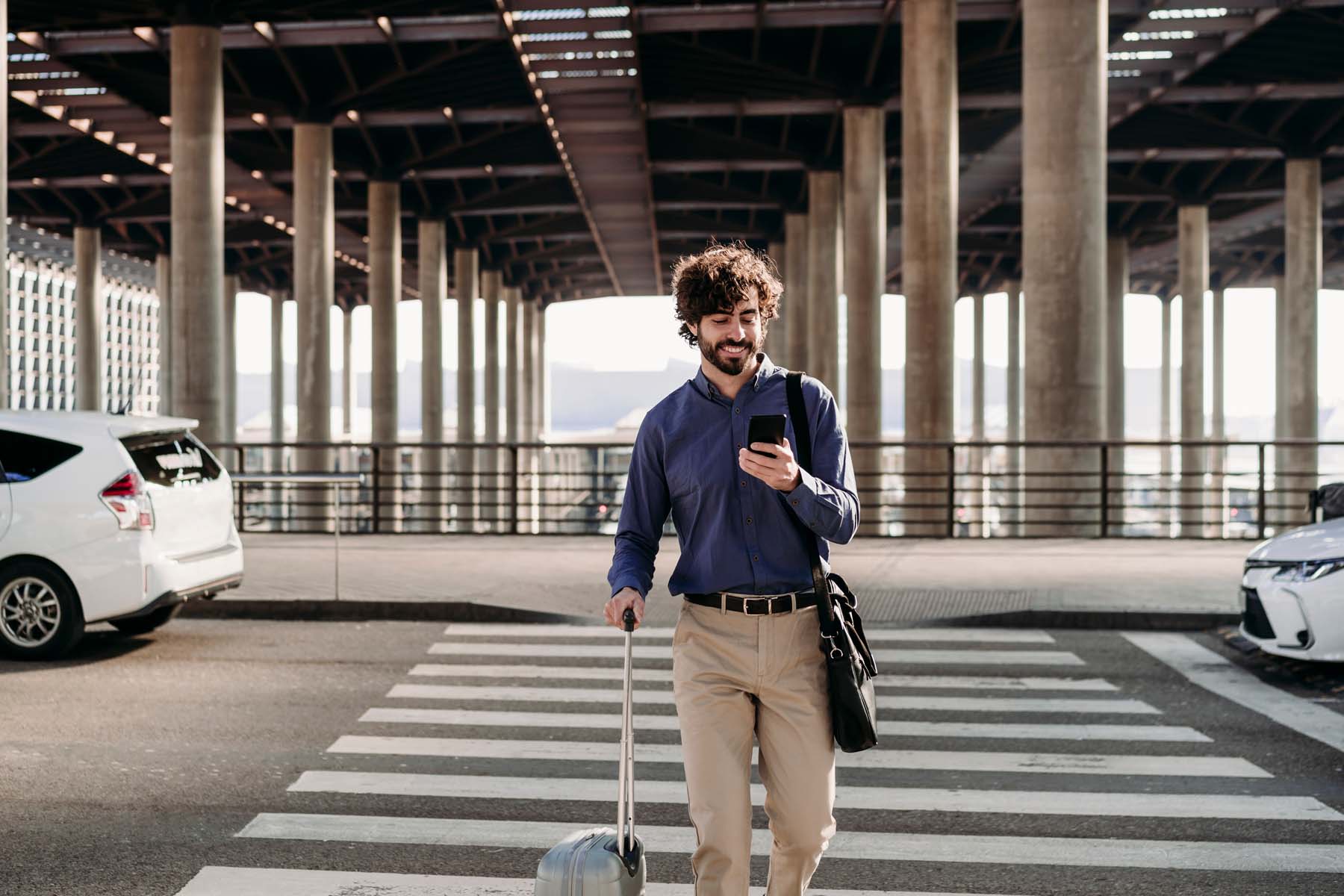
The journey starts before travelers set foot on airport grounds
Efforts to evolve and refine the passenger journey must focus on making passengers feel more comfortable, reducing stress and needless decision making, as well as friction around interactions. A recent study found that nearly 92% of respondents feel anxious around traveling in general.
A journey begins before a passenger ever sets foot on airport grounds. Another survey found that people felt stress around elements of air travel that had nothing to do with the airport facility itself. People feel stressed from the cost of tickets, the process of booking flights, and having to coordinate travel to and from the airport.
While Vantage is primarily focused on what happens at our airports and terminals, we do think about the passenger journey as a whole – and work to make sure our technologies and processes integrate with other elements, such as how people arrive and depart from our facilities, and how they plan their time. For example, can passengers purchase duty-free items through a website or an app before getting to the airport? Similarly, can terminal building systems integrate with ground transportation options?
Waypoints define the journey
When we think about curating a pleasant passenger journey at Vantage, we focus on key touchpoints that create common threads across the airport experience. While every airport – and every passenger – is different, there are some elements that play into every trip.
- Arrival/check-in: A great example of the marriage of technology and human touch, self-serve kiosks and agents work together to ensure people have their questions answered and move through the process swiftly. However subtle, thoughtful and accessible design decisions can also improve the experience. Take the check-in counters at LaGuardia Terminal B, where the luggage scale and belt are flush with the terminal floor, so travelers simply push their bags into place, rather than having to hoist them up onto the scale.
- Security: Digital scanning technology has tremendous potential here to speed up the process and reduce some of the complexity of passenger screening and managing carry-on bag contents like liquids and laptops, but privacy concerns are very real considerations. At Vantage’s New York-area airport terminals, we have partnered with the TSA to incorporate its latest technologies into the screening process.
- Dining and retail: A significant part of the experience, rising expectations means passengers expect premium amenities that reflect the best of a city or region. At Kansas City International, for instance, passengers experience the aroma of KC BBQ, thanks to the authentic on-site smoker at the BBQ Experience restaurant.
- Restrooms: It may seem like a small detail, but restrooms are a leading driver of guest experience. In addition to making sure they are clean and can handle foot traffic, features like touch-free fixtures promote sanitary conditions, and offset doors allow a passenger to easily maneuver a rollaboard into a restroom stall.
- Gate areas: It can be as simple as clear and visible signage, comfortable seating, and charging outlets for laptops and phones, but gate areas should help calm pre-flight jitters at this point in the journey.
- Baggage claim: One of the last touchpoints before passengers leave the airport, baggage claim should leave a positive impression. RIFD tagging of luggage and automated sorting, as well as digital signage displaying information relevant to arriving passengers – like taxi wait times or average drive times to the city center – can take out some of the guesswork.

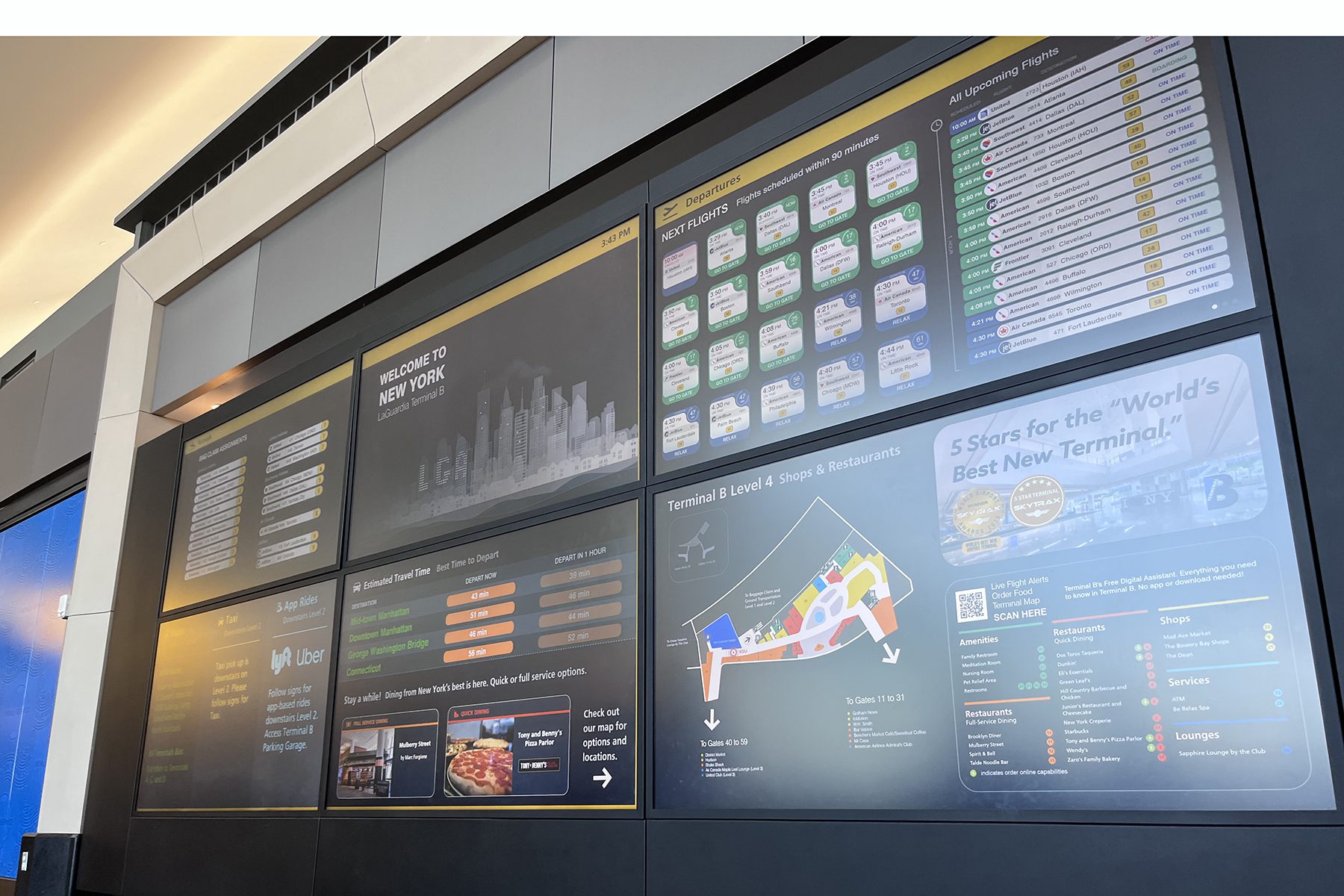
Steps for a seamless journey
A full passenger journey means connecting these critical touchpoints in a way that feels seamless, natural and stress-free. And it starts with informed, purposeful design choices.
There’s an element in design called Hick’s Law that deals with the relationship between the amount of stimuli and a person’s reaction time. When it comes to the passenger experience in airports, it helps designers simplify processes and decision making for passengers, alleviating stress by reducing the decisions a person has to make on their way through check-in and security, the more stressful elements of airport travel. It can be as significant as designing and operating one single security screening checkpoint, or as subtle as designs in the carpeting that encourage people to move in a certain direction, or limiting pillars or other obstructions along walking paths, so travelers don’t have to think “Do I go right or left here?”
It also impacts how concessions and retail experiences are designed at airports. They’re typically some distance from gate areas to encourage travelers to shop, eat, and explore – and too much time sitting at the gate can also lead to stress and frustration. A variety of terminal features, like a kids’ play area, a pocket park, a lively bar, or a quiet workspace, offers travelers a range of choices for how to spend their time – and also spreads out passengers to make the airport feel less crowded.
Another powerful element, in addition to design, is technology. However, integrating technology into the passenger journey should never be about flashy gizmos or intrusive, overly engineered features. Powerful, data-driven technology behind the scenes – that most passengers won’t even notice – is vastly improving the experience of flying. For example:
Digital wayfinding: Clear, simple wayfinding has been a principle of good airport design for decades, but evolving technology like AI and the Internet of Things (IoT) is helping to inject a real-time aspect into the signage. At LaGuardia Terminal B, digital signage tells travelers how long it will take to get from their current position to their respective gates, so they can plan dining or shopping. The aim is reassurance, taking the guesswork (and therefore the stress) out of the point in the journey between security and the gate.
Mobile Inspection Tables at baggage screening: Behind the scenes, airport baggage systems and processes are getting faster and more accurate thanks to automation – and in turn reducing frustrating baggage delays. Using a remote-sensing method called Light Detection and Ranging or LIDAR, Mobile Inspection Tables automatically pull bags for inspection by TSA officers.
Touchless retail: Passengers in airports are focused on luggage, passports, and plane tickets, so creating frictionless, checkout-free experiences can reduce queuing and make people feel less rushed. This—combined with the digital signage described above—can benefit airports by encouraging people to linger in restaurants and retail areas rather than at the gate.
Redefining what travel means
Reinventing the passenger journey means taking a tremendous amount of planning as well as complex, cutting-edge technology, and turning it into an experience that feels natural, intuitive, and unobtrusive. At the same time, spending time at an airport should include a sense of fun, theater and excitement — through unique features, a variety of amenities for adults and kids alike, and top-quality retail experiences.
Facilitated by the latest technology and inspired by a design philosophy that considers all points of connections, Vantage is committed to continually refining and improving the experience of flying — always with the passenger at the center of our efforts.
Resource Hub
Discover How Vantage Elevates Transportation Experiences
At Vantage, we’re launching innovative airport redesign projects and reimagining the future of transportation. See More in Our Resource Hub
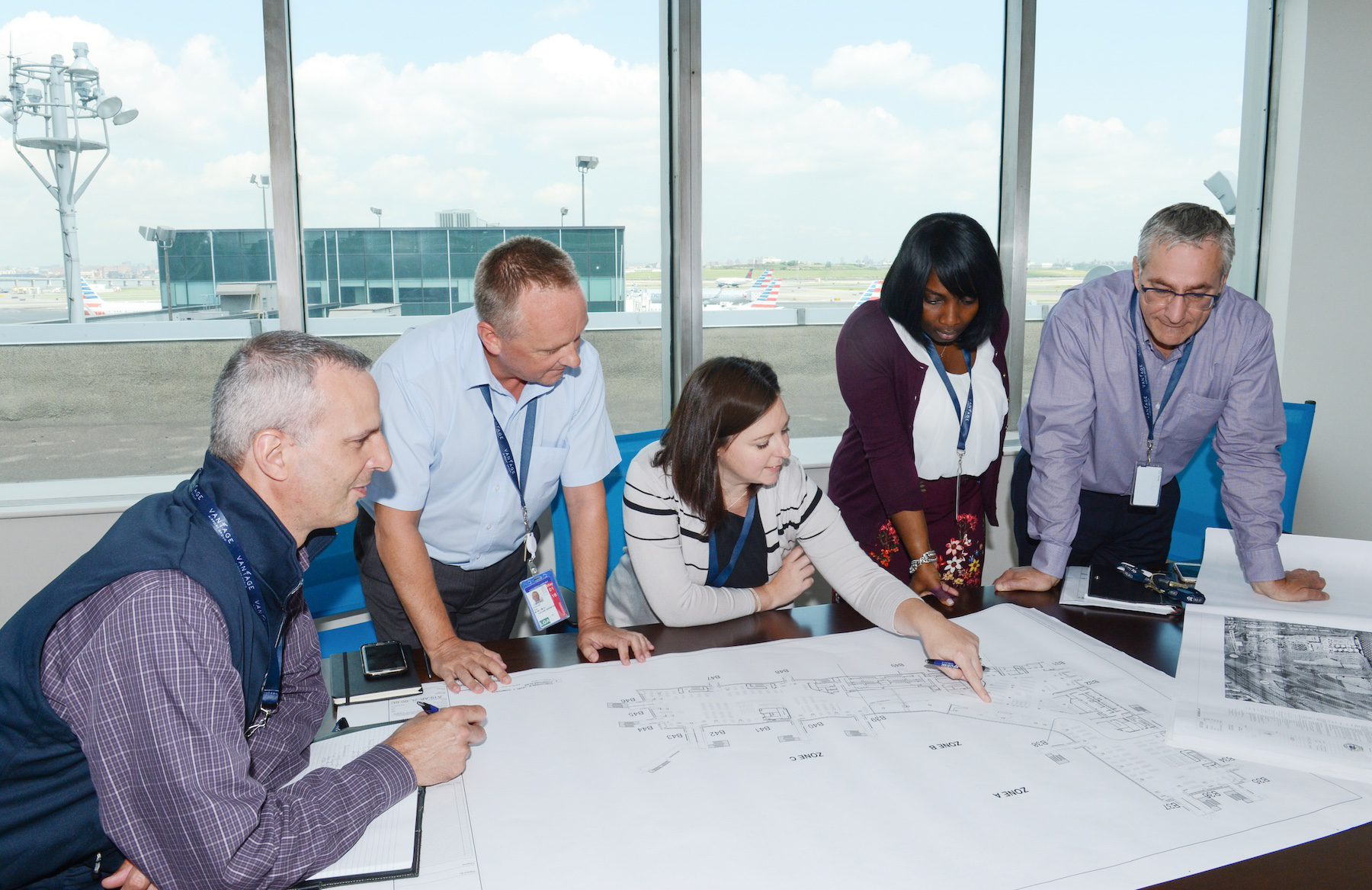
Transforming Transportation, Together
Let’s partner to bring your ideas to life, building sustainable, connected airports and transportation centers together.

